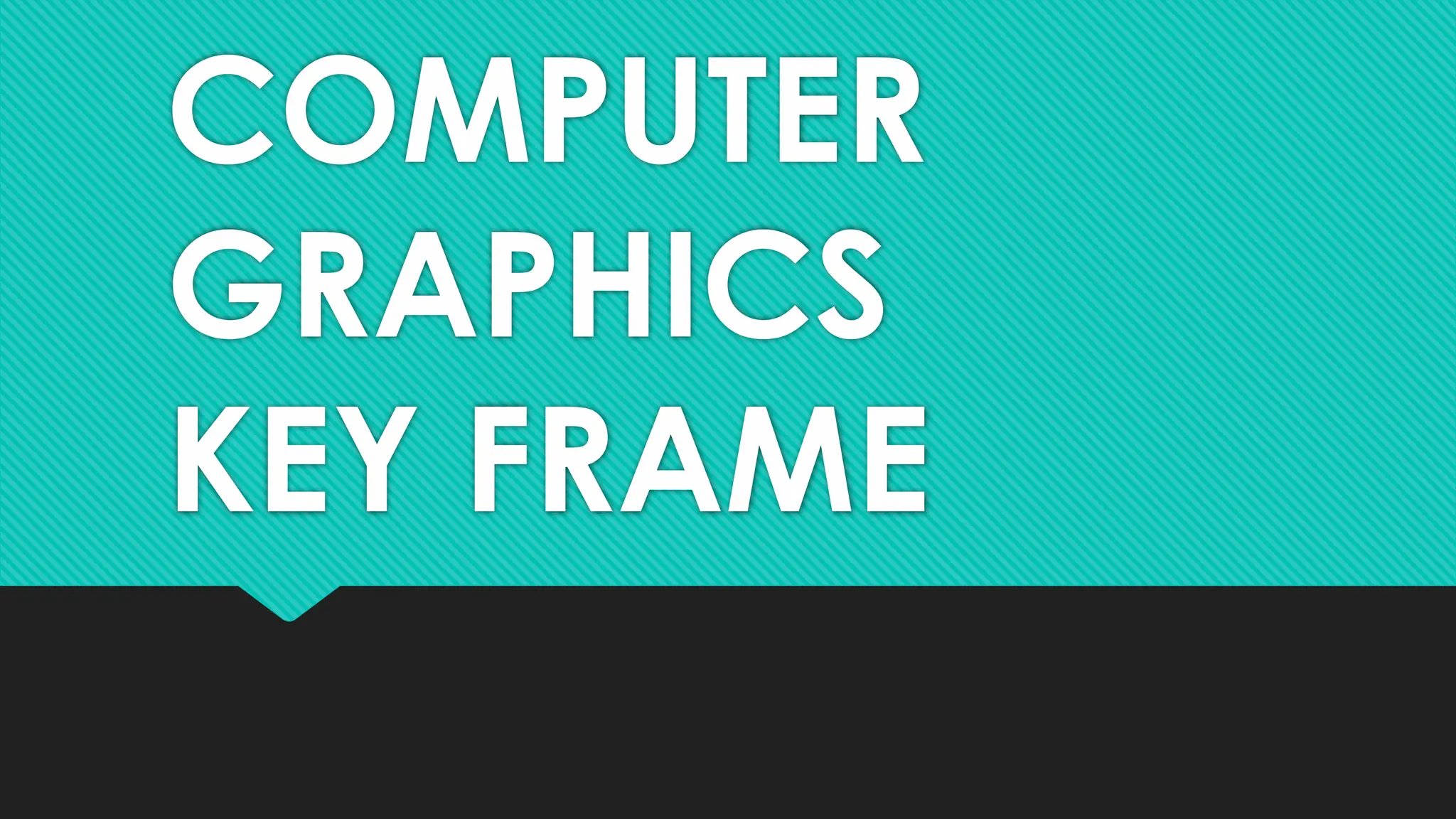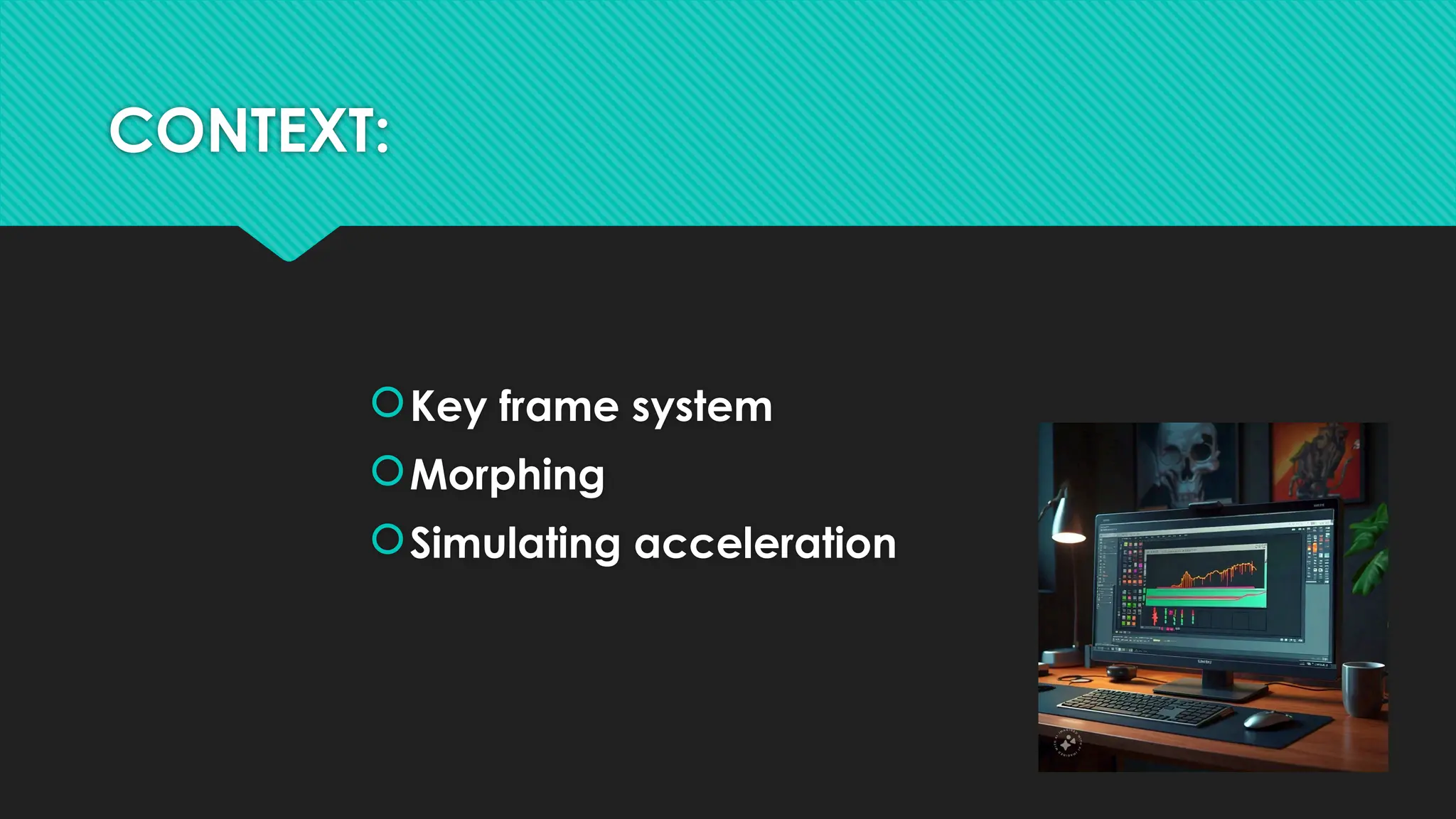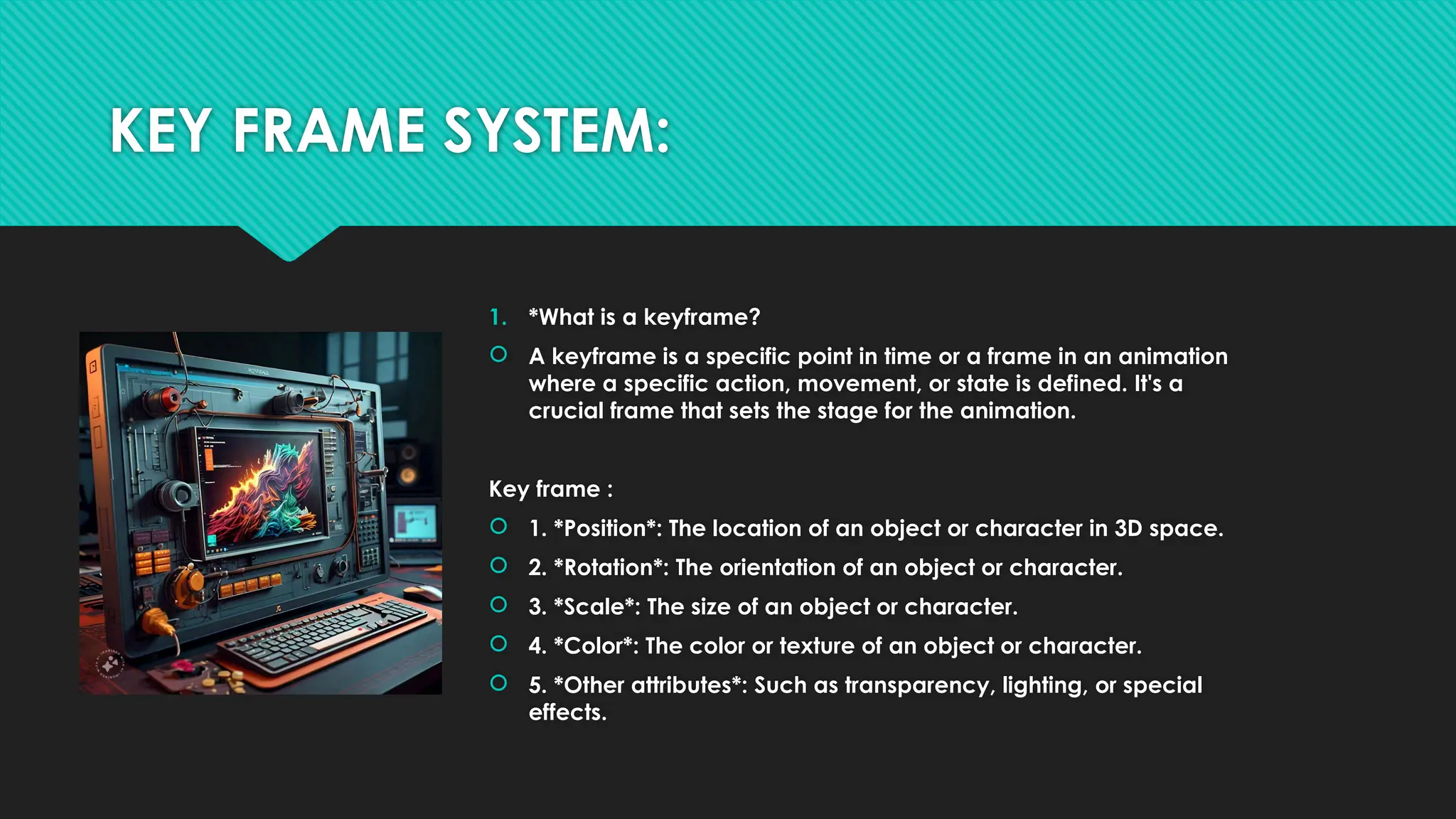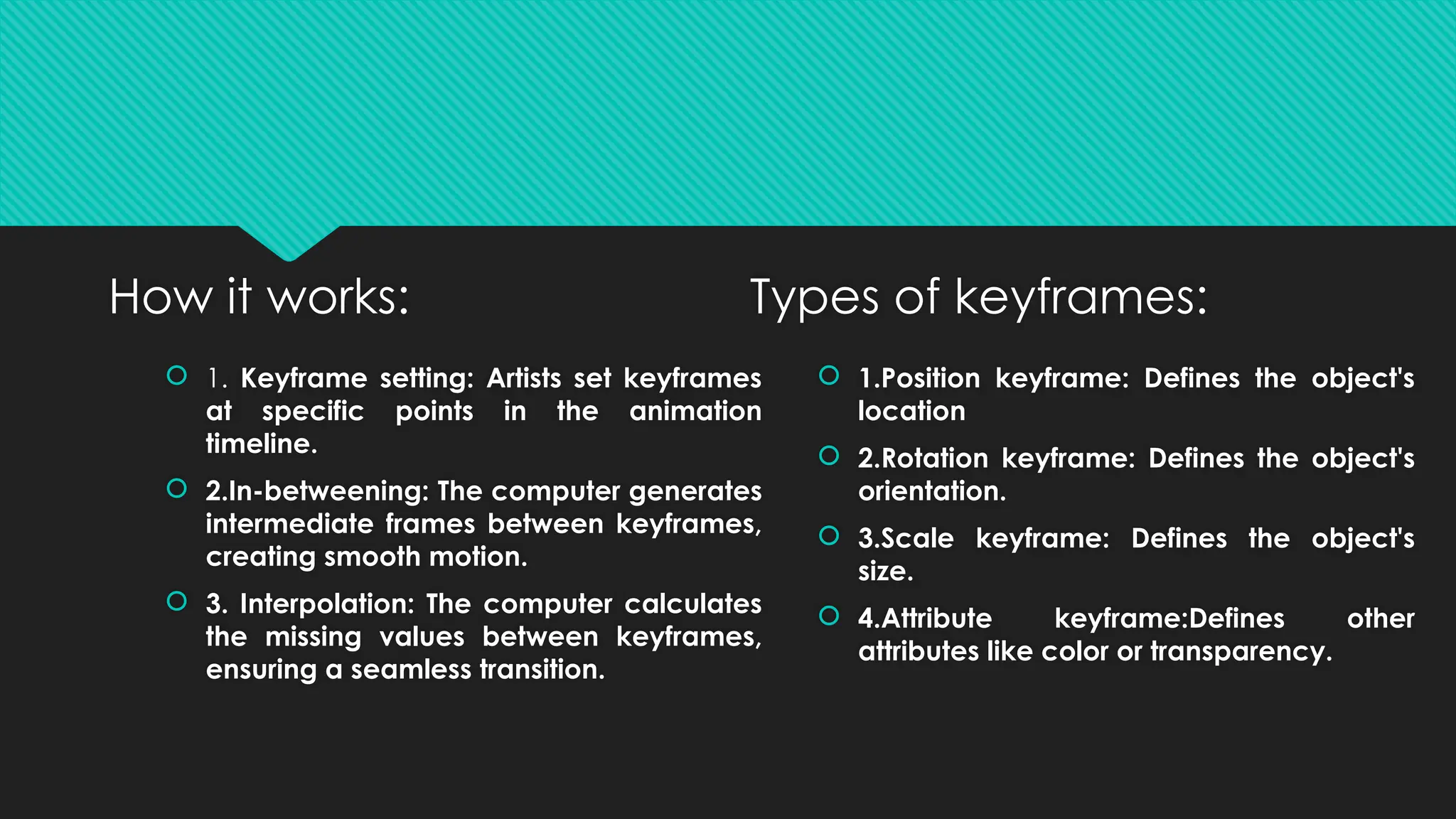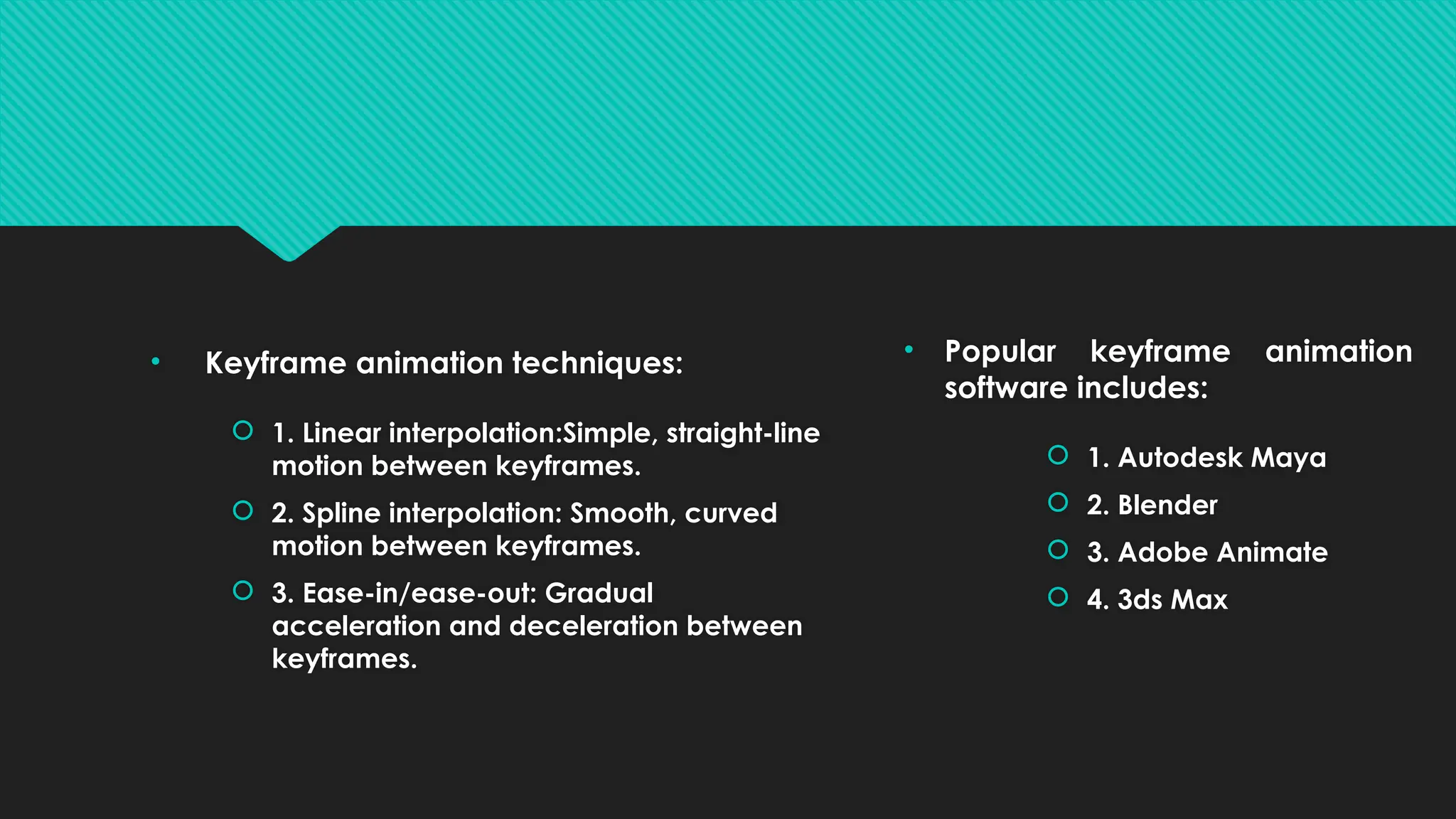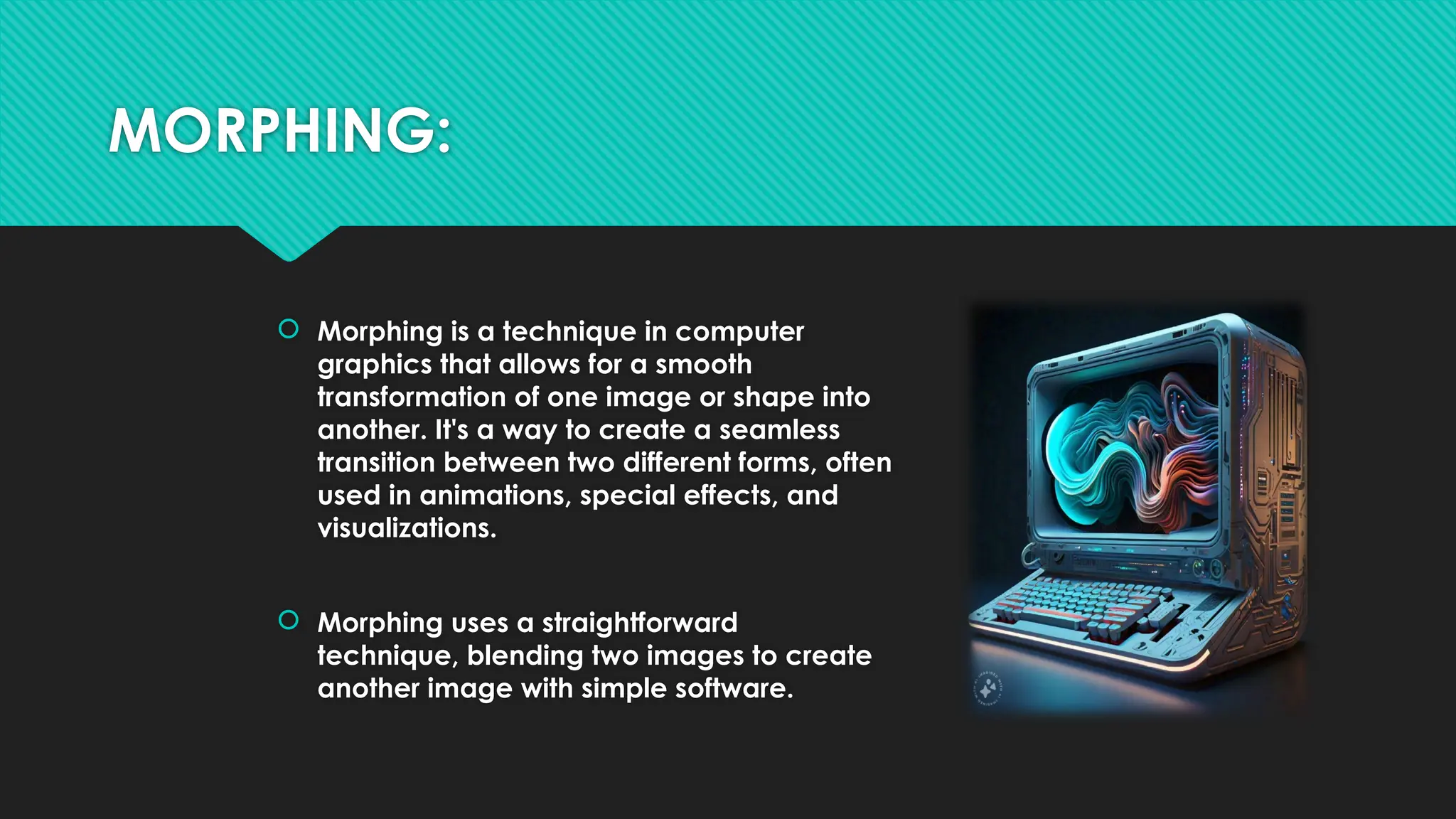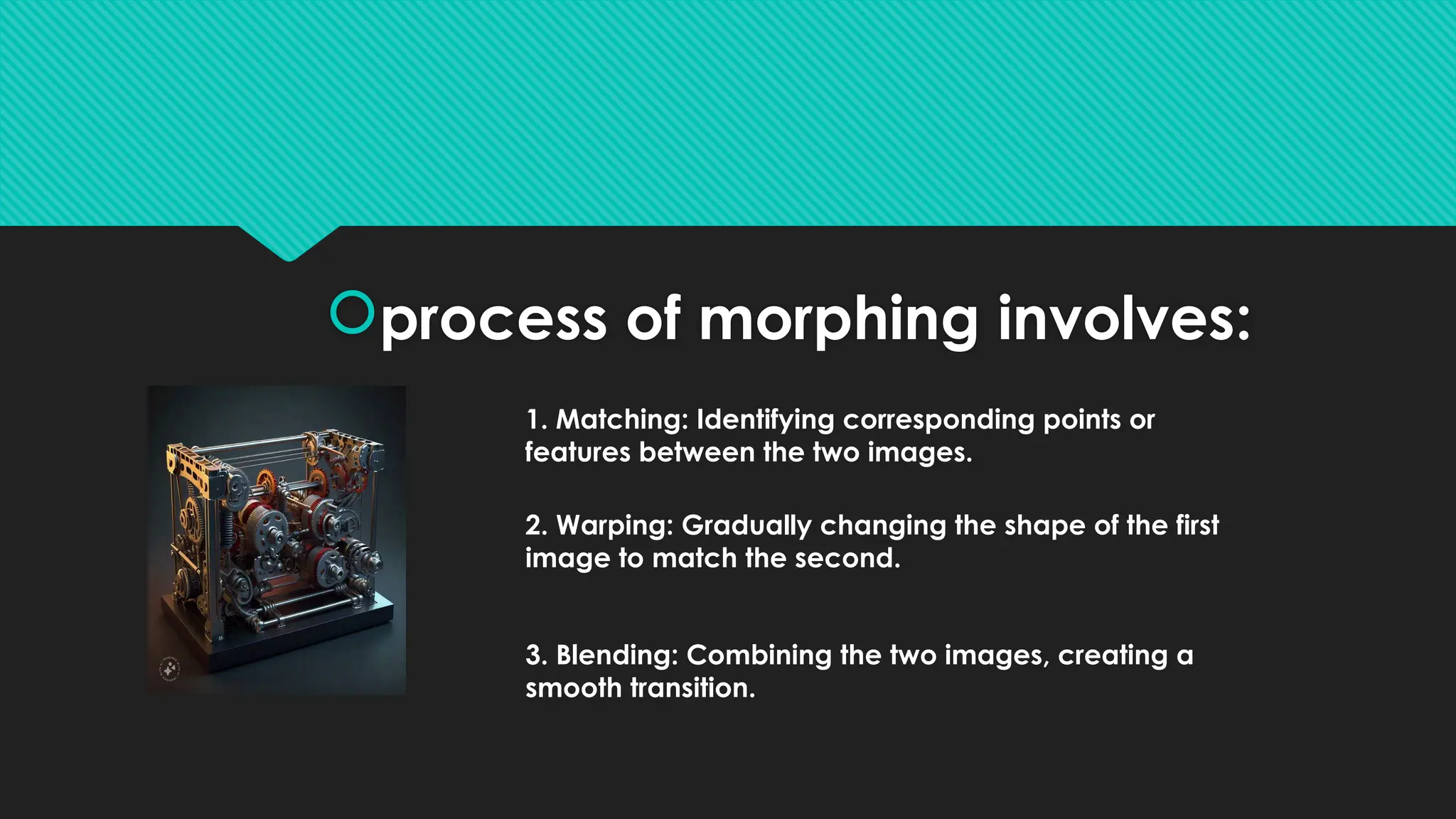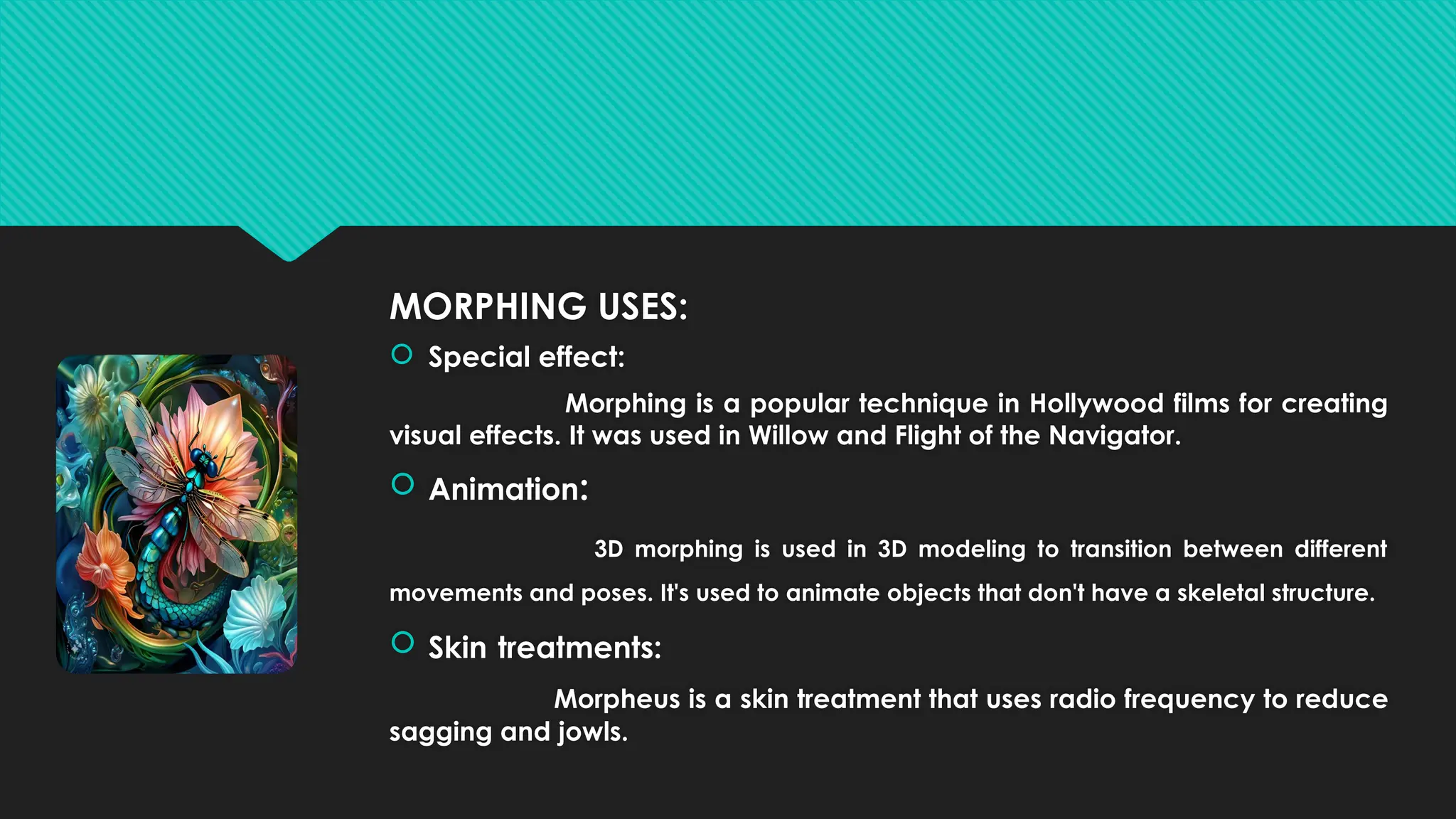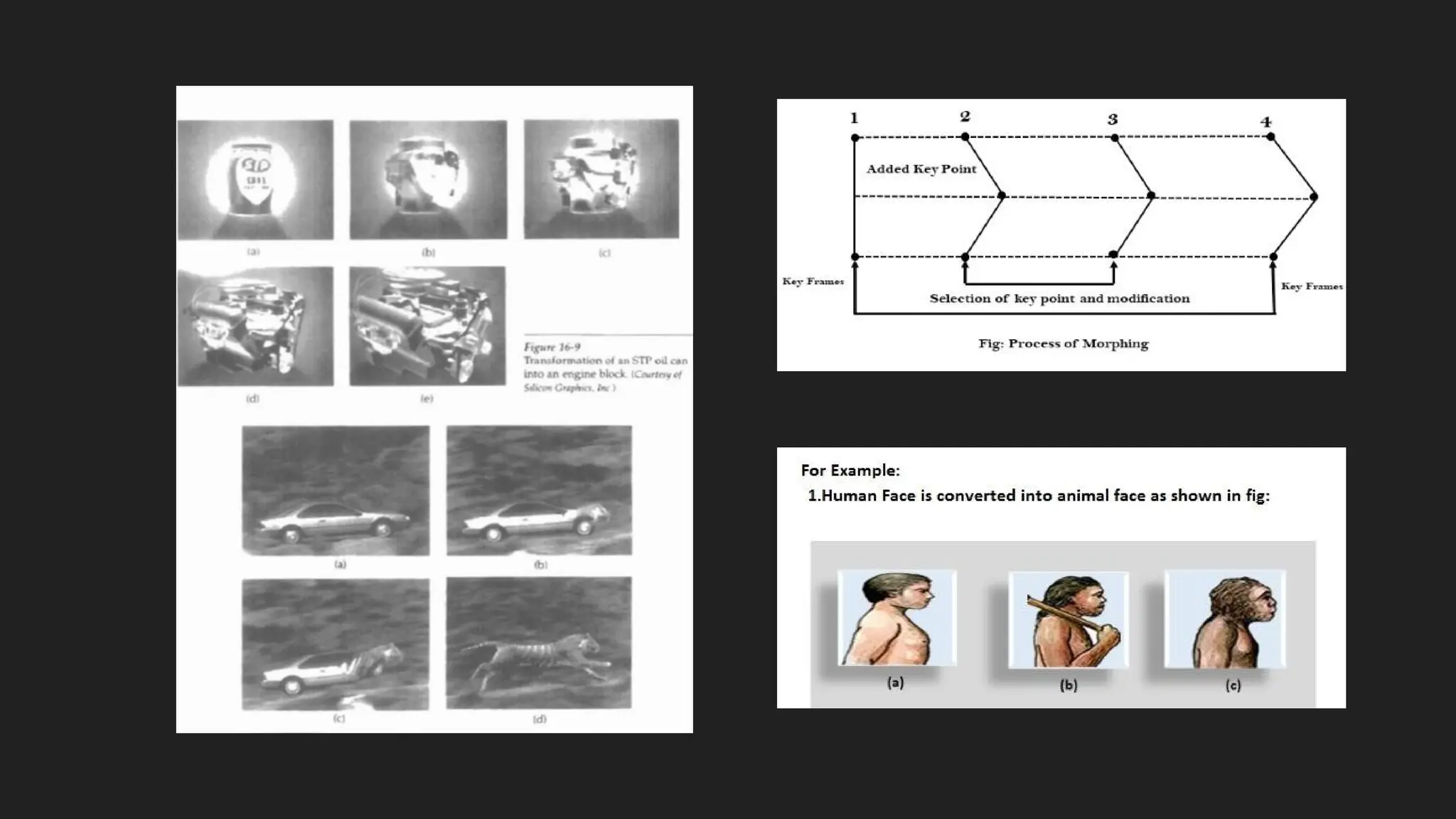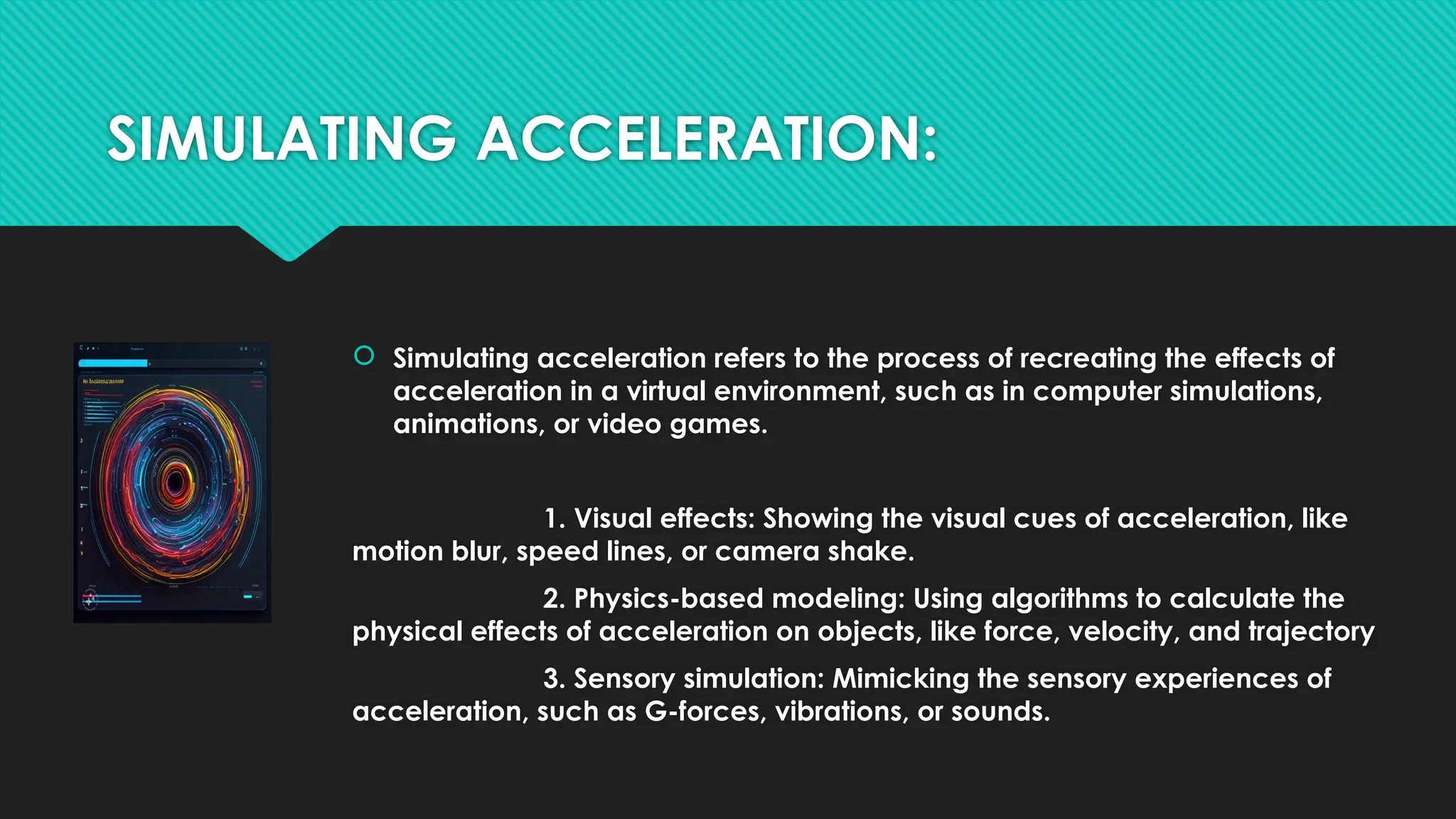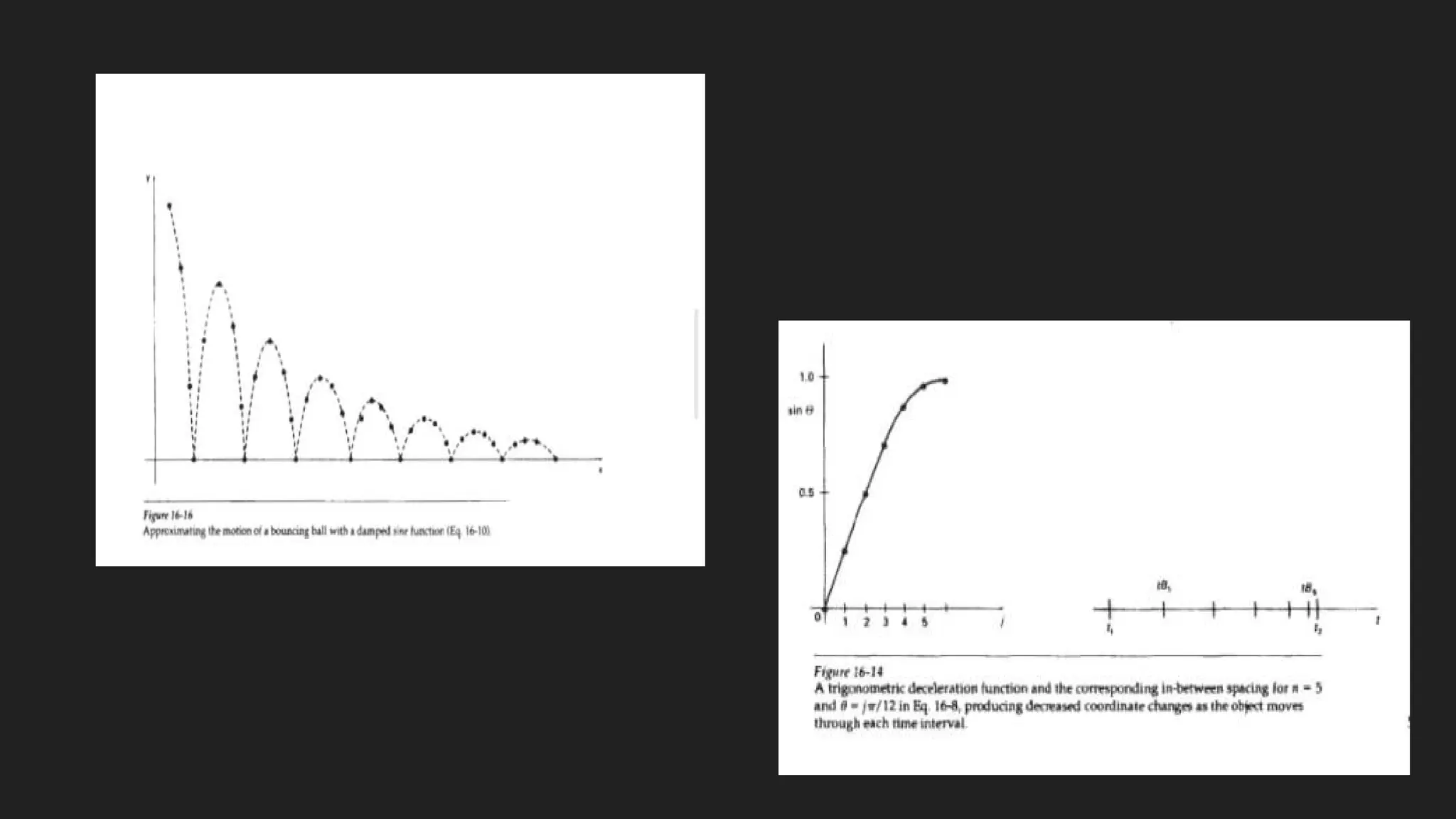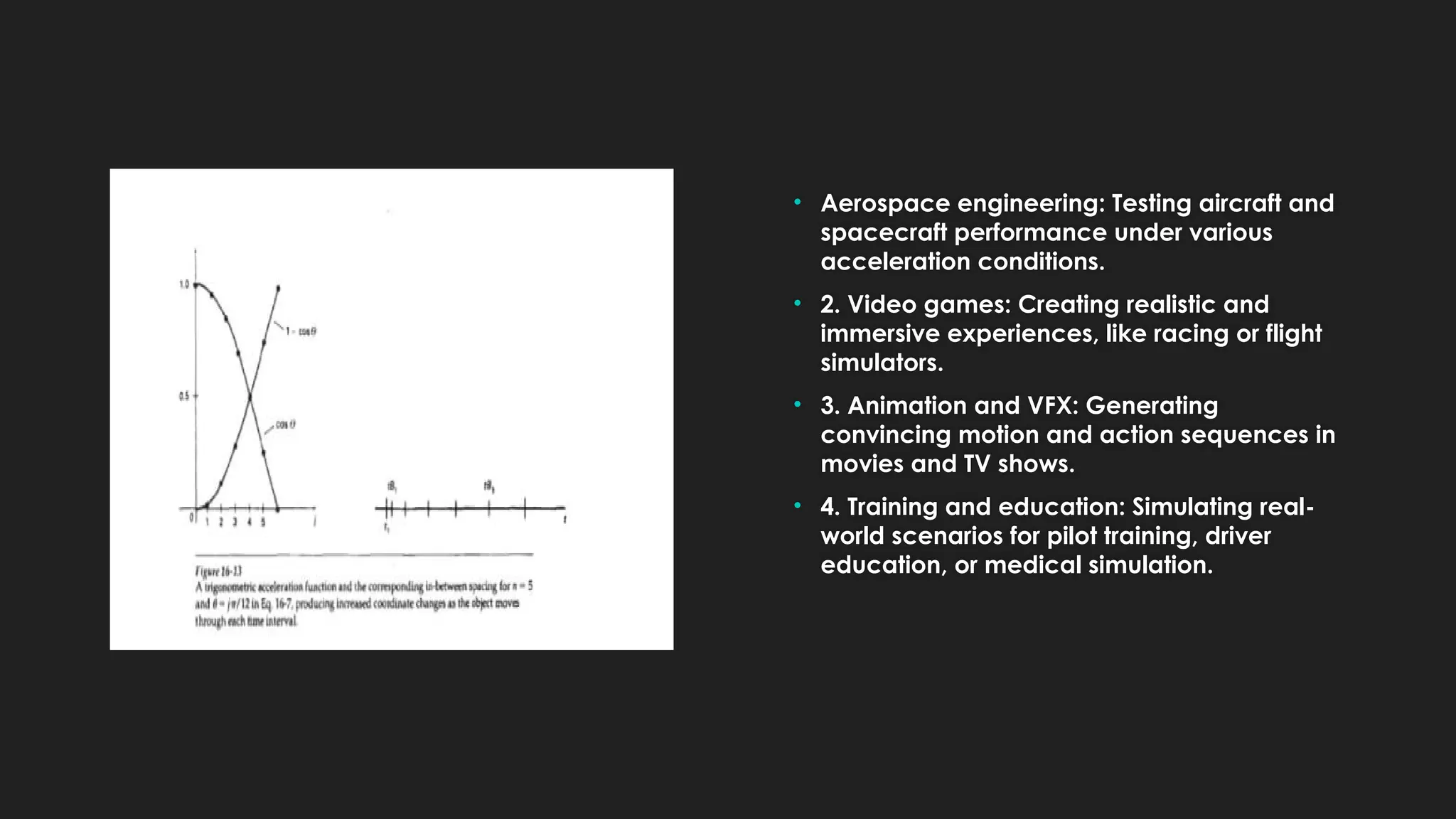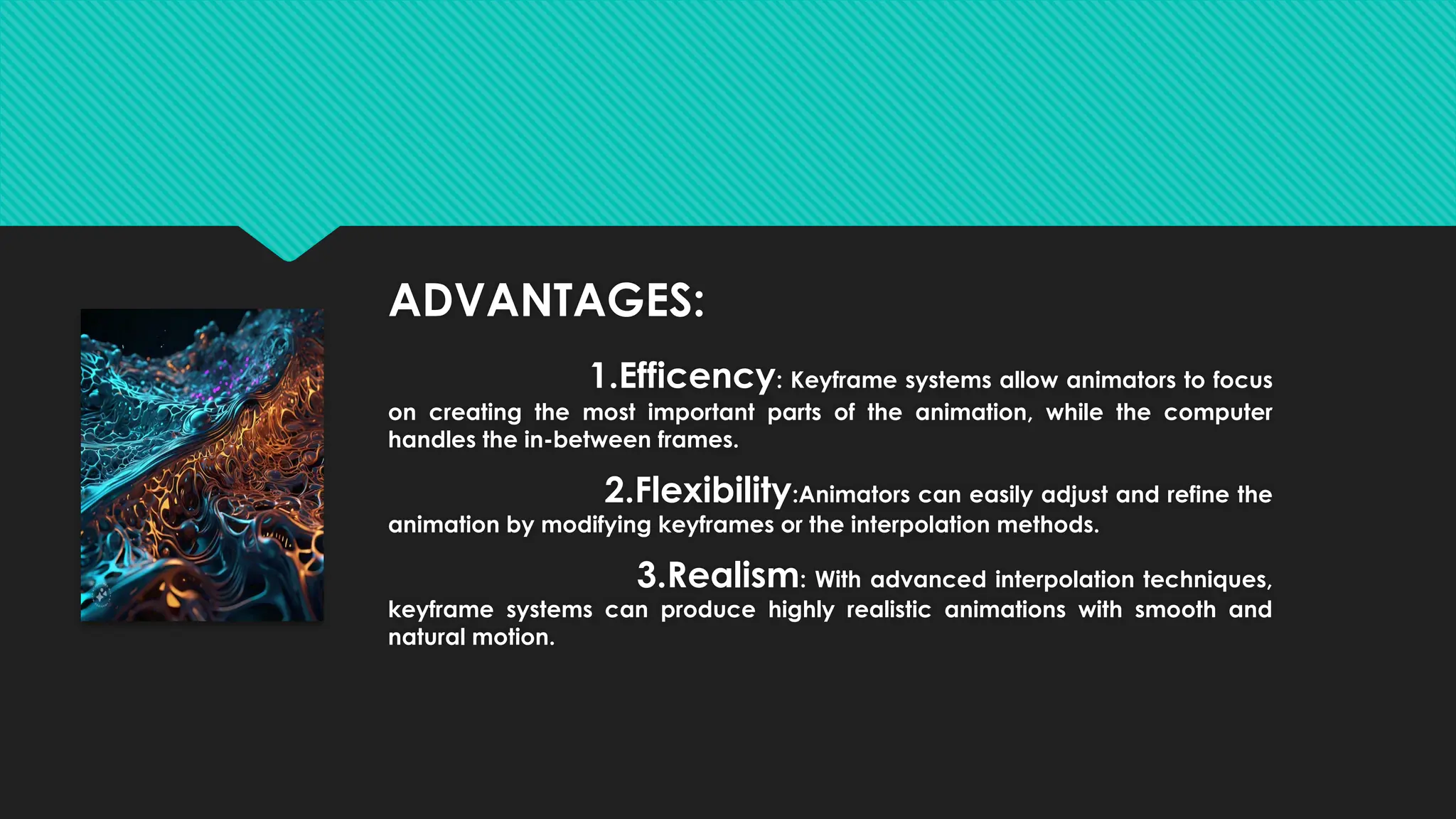The document discusses keyframes in computer graphics, defining them as crucial frames in animations where specific actions are set, including parameters like position, rotation, scale, and color. It covers related techniques such as morphing, which transforms one shape into another, and simulating acceleration, which recreates motion effects in virtual environments. Keyframe animation provides efficiency, flexibility, and realism by allowing animators to specify key moments while computers generate smooth transitions.
